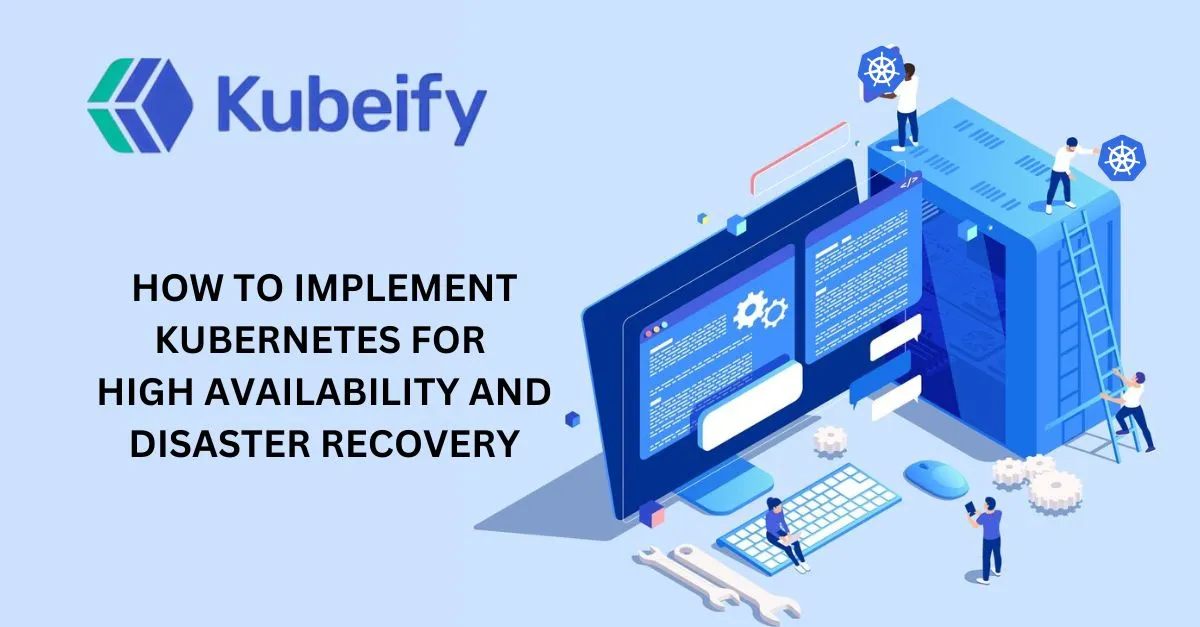AI Cloud
- Cloud Native Product Development
- Cloud Native FaaS
- Monolith to Microservices
- DevSecOps as a Service
- Kubernetes Zero Downtime

Kubernetes is the backbone of modern cloud-native applications, providing scalability, automation, and resilience. However, ensuring high availability (HA) and disaster recovery (DR) in Kubernetes environments requires strategic planning and implementation. In this blog, we will explore best practices for deploying a highly available Kubernetes cluster and preparing for disaster recovery.
High availability ensures that your Kubernetes cluster remains operational even when failures occur. An HA setup minimizes downtime and maintains business continuity. Key components include:
Control Plane Redundancy: Running multiple API servers, etcd nodes, and controllers to avoid single points of failure.
Worker Node Distribution: Spreading workloads across multiple worker nodes to enhance fault tolerance.
Load Balancing: Distributing network traffic efficiently with external and internal load balancers.
Pod Rescheduling: Using controllers like Deployments and DaemonSets to automatically reschedule workloads on healthy nodes.
Multi-Zone Deployment: Deploying Kubernetes clusters across multiple availability zones to mitigate zone-specific failures.
To implement high availability in Kubernetes, follow these steps:
Multi-Master Setup: Run multiple control plane nodes behind a load balancer.
Etcd Cluster Replication: Deploy an odd number of etcd nodes (e.g., 3, 5) for consensus-based fault tolerance.
Node Affinity & Taints/Tolerations: Ensure workloads are spread optimally across nodes and failure domains.
Network and Ingress HA: Use MetalLB, Nginx Ingress Controller, or cloud provider load balancers for traffic distribution.
Cluster Autoscaler & Horizontal Pod Autoscaler (HPA): Automatically scale resources based on demand.
Disaster recovery ensures that you can restore services quickly in case of catastrophic failures. DR strategies in Kubernetes include:
Use tools like Velero, Stash, or Kasten K10 to back up cluster resources and persistent volumes.
Regularly snapshot etcd data to restore the cluster state.
Store backups securely in remote object storage like AWS S3, GCP Cloud Storage, or Azure Blob Storage.
Deploy Kubernetes clusters across multiple geographic regions to mitigate regional outages.
Use Kubernetes Federation or Cluster API to manage multi-cluster environments.
Implement traffic routing using Global Load Balancers (e.g., AWS Global Accelerator, GCP Cloud Load Balancing).
Implement StatefulSets for stateful applications with proper backup mechanisms.
Use Readiness and Liveness Probes to detect and restart unhealthy pods.
Leverage GitOps tools like ArgoCD or FluxCD for declarative state management and rapid recovery.
Configure DNS failover using services like AWS Route 53 or Cloudflare.
Implement database replication (e.g., PostgreSQL Streaming Replication, MySQL Group Replication) across regions.
Use Persistent Volume Replication solutions like Longhorn, Portworx, or OpenEBS.
Regularly conduct chaos engineering experiments using tools like LitmusChaos or Gremlin.
Simulate disaster scenarios to ensure failover mechanisms work as expected.
Maintain comprehensive runbooks and incident response plans for quick recovery.
Ensuring high availability and disaster recovery in Kubernetes is critical for production workloads. By implementing multi-master control planes, backup strategies, multi-cluster deployments, and automated failover mechanisms, organizations can build resilient, fault-tolerant Kubernetes environments.
Start implementing HA and DR strategies today to safeguard your Kubernetes workloads against unexpected failures!

Kubeify's team decrease the time it takes to adopt open source technology while enabling consistent application environments across deployments... letting our developers focus on application code while improving speed and quality of our releases.
– Yaron Oren, Founder Maverick.ai (acquired by OutboundWorks)
Let us know what you are working on?
We would help you to build a
fault tolerant, secure and scalable system over kubernetes.
